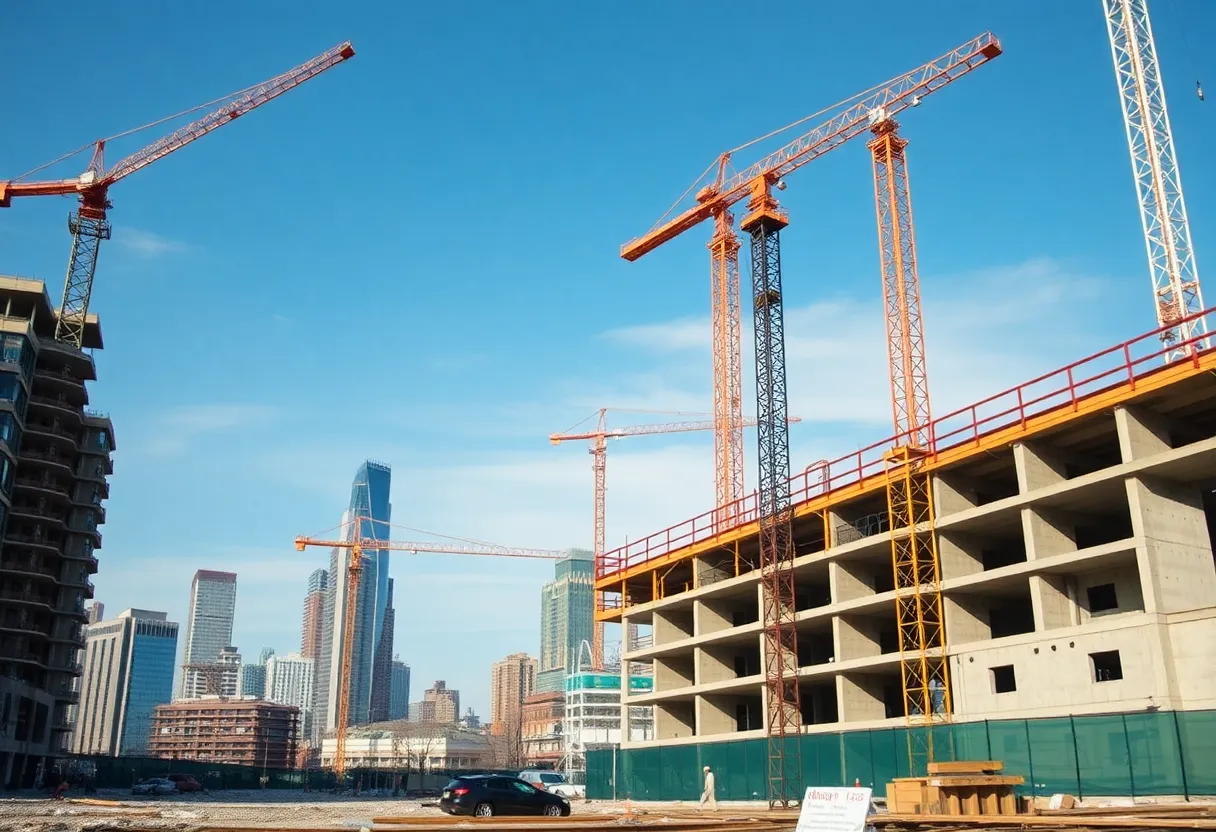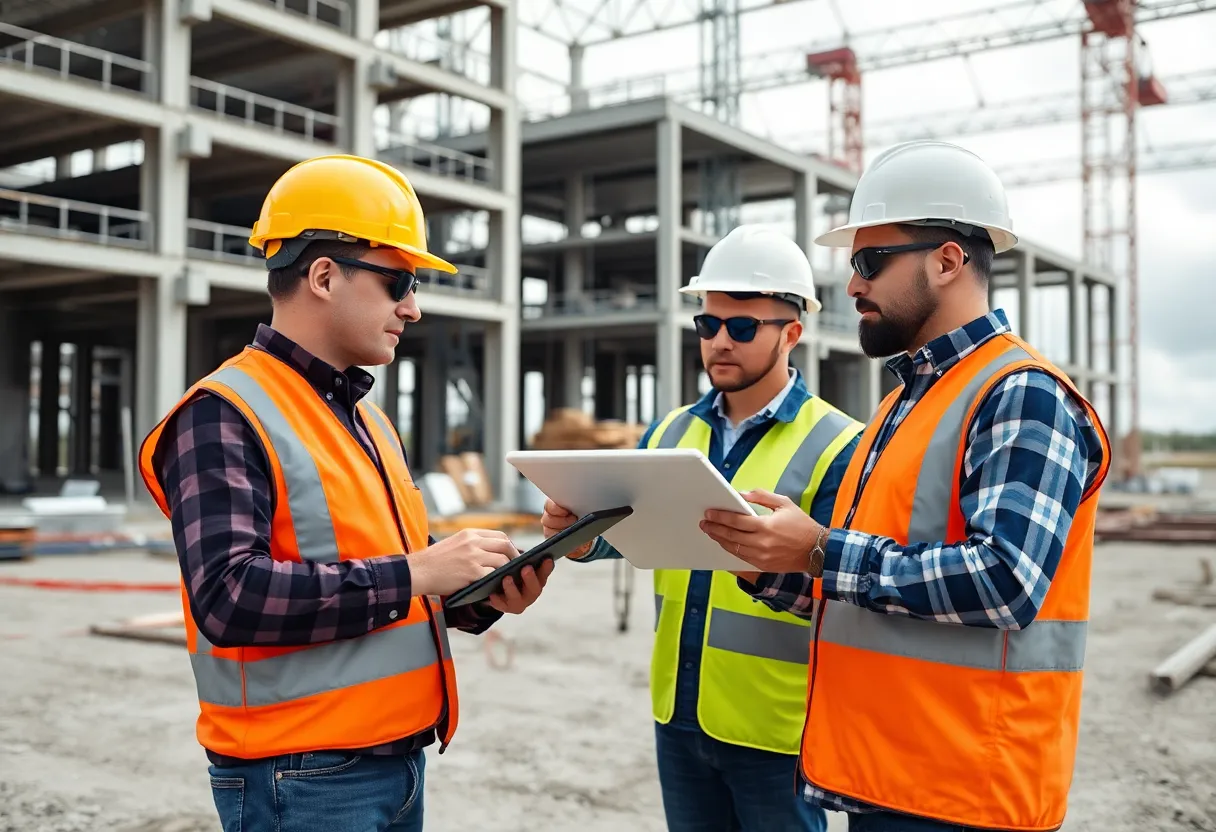News Summary
Construction activity in Chicago has reached a 40-quarter low, reflecting a nationwide decline with an 8% drop in residential permits. High material costs and labor shortages are blamed for widespread project delays, impacting both skyscraper developments in Chicago and residential builds in Texas. Economists warn that without federal incentives for sustainable housing, the slowdown could persist, affecting long-term growth and economic stability in the construction sector.
Chicago Construction Slowdown Reflects National Decline
In Chicago, construction activity has reached a 40-quarter low, mirroring a nationwide downturn in the sector. Residential permits have dropped by 8% across the United States, driven by high material costs and labor shortages that are delaying projects such as skyscrapers in Chicago and residential builds in Texas.
The most critical aspect of this slowdown is the overall reduction in construction activity, which has hit its lowest point in over a decade. This decline affects various segments of the industry, with residential permits specifically falling by 8% nationally. Factors like escalating material costs and persistent labor shortages are exacerbating the situation, leading to widespread project delays.
Supporting details reveal that in Chicago, skyscraper developments are facing significant setbacks due to these challenges. Similarly, residential construction in Texas is experiencing delays, highlighting how regional issues align with the national trend. These problems are not isolated, as they stem from broader economic pressures that are impacting the entire construction landscape.
Background context indicates that the construction sector has been under strain for some time. High material costs, influenced by global supply chain disruptions, and labor shortages, compounded by workforce shortages in skilled trades, have created a perfect storm. Economists point out that without intervention, this slowdown could persist, potentially lasting for an extended period unless federal incentives encourage investment in sustainable housing.
To elaborate, the 40-quarter low in construction activity signifies a historic low point, with data showing a clear contraction in new projects. Nationally, this means fewer building starts, which directly correlates to the 8% drop in residential permits. In practical terms, builders are struggling to secure affordable materials and enough workers, leading to timelines being pushed back in major areas like Chicago’s urban developments and Texas’s housing expansions.
Economists have analyzed these trends and warn of prolonged slowdowns. They suggest that federal incentives aimed at sustainable housing could be a key driver for recovery. Such measures might include subsidies or tax breaks that make green building practices more feasible, thereby stimulating investment and alleviating some of the current pressures.
The impact of high material costs is evident in everyday operations. For instance, the price of steel, lumber, and other essentials has risen sharply, making it harder for contractors to bid on new projects without exceeding budgets. Labor shortages add another layer, as there are not enough skilled workers to meet demand, further delaying timelines. This combination has led to a ripple effect, where delays in one area, like Chicago’s skyscrapers, influence the national economy by reducing job opportunities and economic output.
In Texas, residential builds are particularly affected, with new home constructions stalling due to these same issues. This regional example underscores the nationwide scope, as similar problems are reported across states. The overall sector’s health is tied to these factors, and without addressing them, the construction industry may continue to lag.
Looking ahead, the potential for federal incentives in sustainable housing offers a pathway to improvement. By focusing on eco-friendly practices, the industry could attract new investments and innovate solutions to current challenges. This approach not only addresses immediate issues but also positions the sector for long-term growth.
In summary, the current state of construction in the U.S. is marked by a 40-quarter low in activity, an 8% decline in residential permits, and significant delays in key regions. High material costs and labor shortages are the primary culprits, with economists emphasizing the need for federal support to foster recovery through sustainable housing initiatives. This nationwide issue highlights the interconnectedness of regional and national economic factors, underscoring the urgency for strategic interventions.
This article draws from recent reports on U.S. construction trends, providing a factual overview of the sector’s challenges.
Frequently Asked Questions
Below is a section addressing common questions based on the article’s content:
- Q: What is the current state of construction activity nationwide?
A: Construction activity has hit a 40-quarter low, with residential permits down 8% nationally. - Q: What factors are causing delays in the construction sector?
A: High material costs and labor shortages are plaguing the sector, leading to delays in skyscrapers in Chicago and residential builds in Texas. - Q: What do economists say about the future of the construction industry?
A: Economists warn of prolonged slowdowns unless federal incentives spur investment in sustainable housing.
Key Features Chart
Below is a simple table summarizing key features of the construction slowdown based on the article:
| Feature | Description | Impact |
|---|---|---|
| Construction Activity Level | 40-quarter low nationwide | Indicates historic decline in building starts |
| Residential Permits | Down 8% nationally | Reduces new housing developments |
| Main Challenges | High material costs and labor shortages | Causes delays in projects like Chicago skyscrapers and Texas residential builds |
| Economists’ Warning | Prolonged slowdowns unless action taken | Emphasizes need for federal incentives in sustainable housing |
Deeper Dive: News & Info About This Topic
Construction FL Resources
Homebuilding Surge in Atlanta Suburbs Faces Market Challenges
Seattle’s Waterfront Revitalization Project Breaks Ground
Road Repairs Initiated Across Southern States
Chicago Bears Pursue $855 Million for New Stadium
Major PHCP merger creates $40 billion national distributor network
CO Summit Atlanta set for a full-day construction industry summit at KSU
Reality-capture and Projection Startups Lead $110M Construction Tech Funding
West Loop tower lands $96M for 19‑story, 287‑unit apartment project
Chicago NFL team confirms privately financed domed stadium and mixed‑use district in Arlington Heights
Global Polyisocyanurate Insulation Market Set for Growth
Author: Construction FL News
The FLORIDA STAFF WRITER represents the experienced team at constructionflnews.com, your go-to source for actionable local news and information in Florida and beyond. Specializing in "news you can use," we cover essential topics like product reviews for personal and business needs, local business directories, politics, real estate trends, neighborhood insights, and state news affecting the area—with deep expertise drawn from years of dedicated reporting and strong community input, including local press releases and business updates. We deliver top reporting on high-value events such as the Florida Build Expo, major infrastructure projects, and advancements in construction technology showcases. Our coverage extends to key organizations like the Associated Builders and Contractors of Florida and the Florida Home Builders Association, plus leading businesses in construction and legal services that power the local economy such as CMiC Global and Shutts & Bowen LLP. As part of the broader network, including constructioncanews.com, constructionnynews.com, and constructiontxnews.com, we provide comprehensive, credible insights into the dynamic construction landscape across multiple states.





